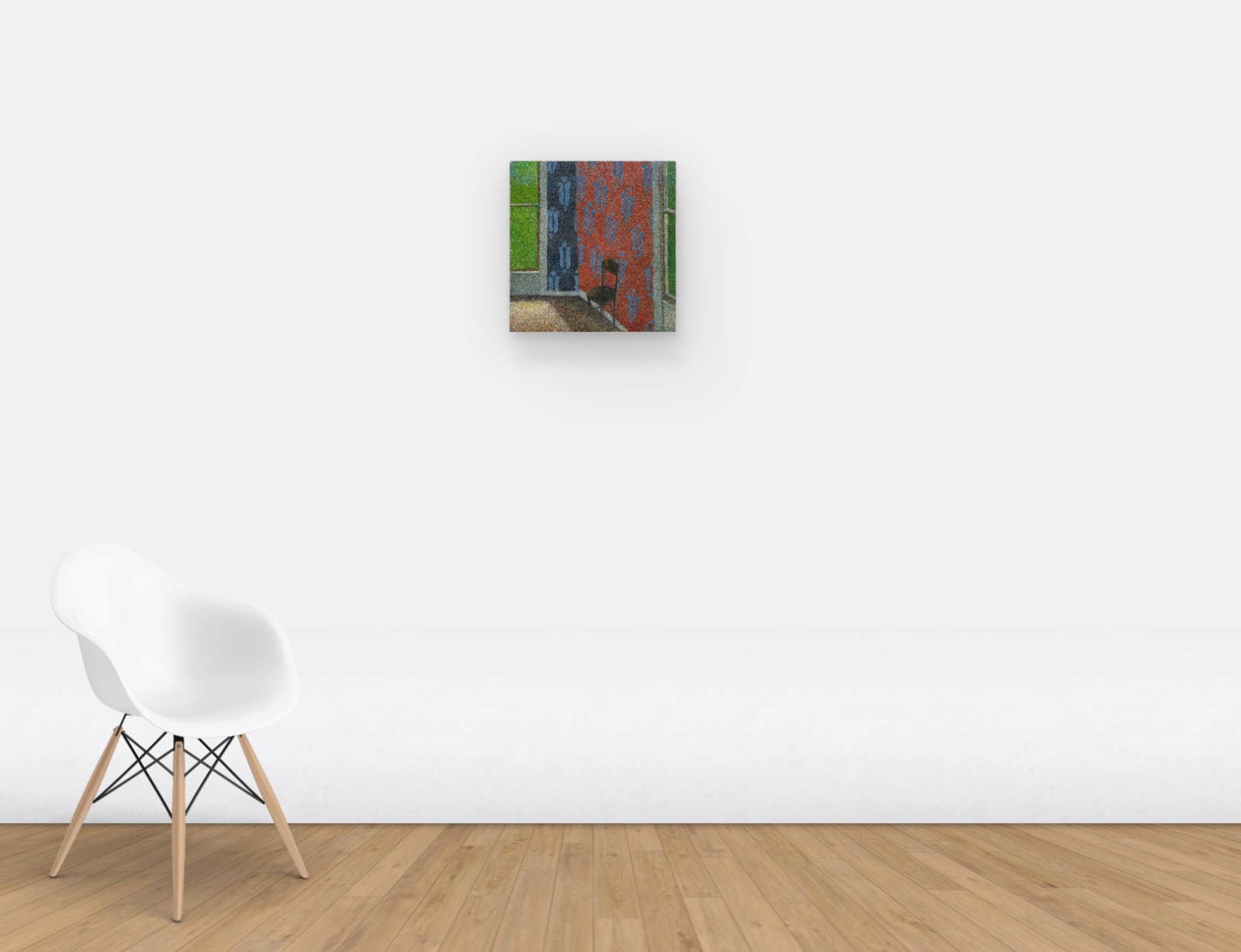ROBERT KOBAYASHI
Fleur-de-lis #4, 1979
Oil on canvas
15 x 15 x 3 in.
Copyright The Estate of Robert Kobayashi
$ 25,000.00
Further images
This painting has been in my recollection of my father’s artwork for as long as I can remember. Looking at it now, from a viewpoint more separated by time and...
This painting has been in my recollection of my father’s artwork for as long as I can remember. Looking at it now, from a viewpoint more separated by time and location, I see the surrealism of the green light pouring through the windows and the alarmed stance of the chair, as though it’s trying to back away from the pall spilling onto the floor.
Those chairs, creaky jointed and flimsy wood, were another staple of my growing-up-hood: the same kind of chairs that populated the cafes during my dad’s time in Paris, essential to his growth as an artist. Some still exist in our house, mended with a new seat from a painting done on plywood that Dad found on the street. One of the chairs still has his signature electrical tape around some of the wood because it was beginning to fray and splinter. My heart kind of does a nostalgic flutter whenever I see the cafe chairs in the wild; I immediately want to sit down wherever they’re posted.
The other detail about the painting that is forever embossed into the fiber of childhood and Elizabeth Street itself is the Fleur de Lis pattern that adorns the multi-colored walls. I spent the first months of my life in the bottom dresser drawer that my father painted a Fleur de Lis pattern inside of. There was no space in their tiny bedroom for a crib, but needing to check on me at all hours, Dad put wheels on the bottom of the drawer, and during the day, it was tucked neatly back in. His Fleur de Lis was painted without a stencil, freehand and remarkably steady, mostly peach-colored and outlined in gray-green. When I outgrew the drawer and it was time for a room of my own, Dad built a vanity for me with a matching stool, and both bore the same flower pattern as the bottom drawer as a kind of continuity. We still have the footstool, which looks too low, but is actually the perfect height for a family, just a few inches too short for the shelves.
- Misa Kobayashi
Those chairs, creaky jointed and flimsy wood, were another staple of my growing-up-hood: the same kind of chairs that populated the cafes during my dad’s time in Paris, essential to his growth as an artist. Some still exist in our house, mended with a new seat from a painting done on plywood that Dad found on the street. One of the chairs still has his signature electrical tape around some of the wood because it was beginning to fray and splinter. My heart kind of does a nostalgic flutter whenever I see the cafe chairs in the wild; I immediately want to sit down wherever they’re posted.
The other detail about the painting that is forever embossed into the fiber of childhood and Elizabeth Street itself is the Fleur de Lis pattern that adorns the multi-colored walls. I spent the first months of my life in the bottom dresser drawer that my father painted a Fleur de Lis pattern inside of. There was no space in their tiny bedroom for a crib, but needing to check on me at all hours, Dad put wheels on the bottom of the drawer, and during the day, it was tucked neatly back in. His Fleur de Lis was painted without a stencil, freehand and remarkably steady, mostly peach-colored and outlined in gray-green. When I outgrew the drawer and it was time for a room of my own, Dad built a vanity for me with a matching stool, and both bore the same flower pattern as the bottom drawer as a kind of continuity. We still have the footstool, which looks too low, but is actually the perfect height for a family, just a few inches too short for the shelves.
- Misa Kobayashi







